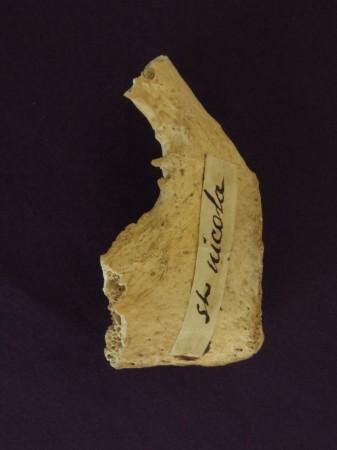
A fragment of bone attributed to a fourth-century saint, who inspired the legend of Santa Claus, could indeed belong to him, suggesting that researchers are closer to unearthing the authentic relics of the original Santa.
Researchers at the University of Oxford conducted a radiocarbon dating study on the bone, which was long venerated as having belonged to St Nicholas, a Christian saint who died around 343 AD. According to the results of the new study, the ancient relic does date from the fourth century AD, which lines up with calculations about St Nicholas' death.
According to the legend, St Nicholas was known for his generosity and secret gift giving. Following his death, stories around him were morphed into the myth of Santa Claus, the bringer of gifts on the Christmas Day we know today.
Many of St Nicholas' remains are believed to be kept in a church in Bari, Italy while some others are preserved in the Chiesa di San Nicolo al Lido in Venice. The small pelvis bone-fragment, examined for the new study, was owned by Father Dennis O'Neill in Illinois, U.S., who obtained it from Lyon in France.

"Many relics that we study turn out to date to a period somewhat later than the historic attestation would suggest. This bone fragment, in contrast, suggests that we could possibly be looking at remains from St Nicholas himself," Tom Higham, one of the Oxford researchers working on the study, said in a statement.
A previous anatomical study concluded that the relics held in Venice were complementary to the Bari collection, and could have originated from the same individual. Therefore, the Oxford University researchers are now willing to examine samples from these two collections.
"These results encourage us to now turn to the Bari and Venice relics to attempt to show that the bone remains are from the same individual. We can do this using ancient palaeogenomics, or DNA testing. It is exciting to think that these relics, which date from such an ancient time, could in fact be genuine," Georges Kazan, another Oxford researcher, said in the statement.
So, do these ancient bones indeed belong to the original Santa Claus? As the researchers themselves admitted, we may never have a definite answer to this. But further study will definitely help us get as close to an answer as possible.
"Science is not able to definitely prove that it is, it can only prove that it is not, however," Higham said.








